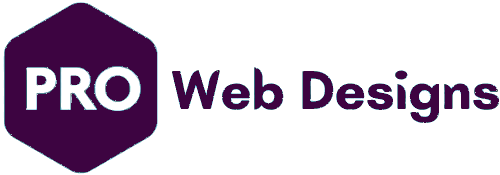Testing and Debugging Web Applications: Ensuring Quality and Reliability
Introduction
In the competitive landscape of web development, delivering high-quality and reliable web applications is paramount for user satisfaction and business success. Achieving this goal requires a robust approach to testing and debugging, ensuring that web applications are free from bugs, perform seamlessly, and meet the expectations of users. By implementing comprehensive testing strategies and employing effective debugging techniques, developers can create web applications that are not only functional but also resilient, seguro, and enjoyable to use.
Unveiling the Importance of Testing and Debugging
Enhanced User Experience: Rigorous testing and debugging identify and eliminate bugs, ensuring a smooth and bug-free user experience that fosters user satisfaction and loyalty.
Improved Application Quality: Testing and debugging uncover hidden defects and potential issues, leading to a more robust, stable, and reliable web application.
Reduced Development Costs: By preventing bugs from reaching production, testing and debugging save time and resources that would otherwise be spent on fixing issues after deployment.
Enhanced Security: Testing and debugging can identify security vulnerabilities, protecting user data and preventing cyberattacks that could damage the application’s reputation.
Increased User Confidence: Well-tested and debugged web applications instill confidence in users, encouraging them to rely on the application and engage with its features.
Essential Testing Types for Web Applications
Unit Testing: Tests individual units of code, such as functions or modules, ensuring they function as intended and produce the expected results.
Integration Testing: Verifies the interactions between different components of the web application, ensuring seamless data flow and communication between modules.
Functional Testing: Validates the application’s functionality against user requirements and specifications, ensuring it meets the intended purpose and behaves as expected.
Performance Testing: Assesses the application’s performance under load, identifying bottlenecks and optimizing resource usage to ensure responsiveness and scalability.
Usability Testing: Evaluates the user experience, focusing on ease of use, intuitiveness, and overall user satisfaction.
Security Testing: Identifies and addresses security vulnerabilities, protecting user data and preventing unauthorized access or attacks.
Effective Debugging Techniques for Web Developers
Reproduce the Bug: Consistently reproduce the bug to isolate the cause and narrow down the scope of the problem.
Check Error Messages and Logs: Analyze error messages and application logs for clues about the source of the bug and its potential impact.
Use Debuggers: Employ debuggers to step through the code, examine variable values, and identify the exact location where the bug occurs.
Print Statements and Logging: Add temporary print statements or logging messages to track the execution flow and identify where the bug manifests.
Rubber Duck Debugging: Explain the problem to an inanimate object, such as a rubber duck, to verbalize the issue and potentially uncover new perspectives or solutions.
Seek Help from Others: Collaborate with colleagues, mentors, or online communities to gain fresh perspectives and potential solutions.
Harnessing the Power of Test Automation and Continuous Integration
Test Automation: Automate repetitive testing tasks, freeing up developers to focus on more complex testing scenarios and critical bug fixing.
Continuous Integration: Integrate automated testing into the development workflow, ensuring that every code change is automatically tested and validated.
Continuous Delivery: Automate the deployment process, enabling frequent and reliable delivery of new features and bug fixes to production.
DevOps: Adopt DevOps practices to bridge the gap between development and operations, promoting collaboration and faster release cycles.
Conclusion
Testing and debugging are not merely afterthoughts in the web development process; they are integral components of delivering high-quality, reliable, and secure web applications. By embracing a comprehensive testing strategy, employing effective debugging techniques, and leveraging the power of test automation and continuous integration, developers can create web applications that not only meet user expectations but also exceed them, fostering long-term user satisfaction and business success.
Essential Tools and Technologies for Web Developers: Empowering Your Web Development Journey
Introduction
In the dynamic world of web development, the right tools and technologies are the cornerstones of success. Whether you’re a seasoned developer or just starting out, equipping yourself with the essential toolkit can streamline your workflow, enhance productivity, and elevate the quality of your web creations.
Essential Tools for Front-End Development
Code Editors: Choose a code editor that suits your preferences, such as Visual Studio Code, Sublime Text, or Atom, to write, editar, and debug your front-end code.
Preprocessors: Utilize preprocessors like Sass or LESS to streamline CSS development, organize your code, and enhance maintainability.
JavaScript Frameworks: Leverage JavaScript frameworks like React, Angular, or Vue.js to build complex and interactive user interfaces.
Task Runners: Employ task runners like Gulp or Grunt to automate repetitive development tasks, such as compilation, minification, and testing.
Responsive Design Tools: Utilize tools like BrowserSync or Responsinator to test and optimize your website’s responsiveness across different screen sizes.
Essential Tools for Back-End Development
Programming Languages: Master a back-end programming language like Python, Java, PHP, or Node.js to build server-side applications and APIs.
Databases: Choose a suitable database like MySQL, PostgreSQL, or MongoDB to store and manage your website’s data.
Version Control Systems: Utilize version control systems like Git to track changes, collaborate with other developers, and revert to previous versions if needed.
Development Environments: Employ integrated development environments (IDEs) like PyCharm or WebStorm for back-end development, offering advanced features and debugging capabilities.
Testing Frameworks: Implement testing frameworks like JUnit or Mocha to ensure the quality and reliability of your back-end code.
Essential Tools for Full-Stack Development
Full-Stack Frameworks: Explore full-stack frameworks like Ruby on Rails or Django that combine front-end and back-end development capabilities.
API Management Tools: Utilize API management tools like Postman or Apiary to design, test, and document your APIs effectively.
Containerization Technologies: Consider containerization technologies like Docker or Kubernetes for deploying and managing your web applications in a scalable and portable manner.
Cloud Platforms: Leverage cloud platforms like Amazon Web Services (AWS) or Google Cloud Platform (GCP) for hosting and scaling your web applications.
Monitoring and Logging Tools: Implement monitoring and logging tools to track application performance, identify potential issues, and gather valuable insights.
Conclusion
The landscape of web development tools and technologies is constantly evolving, offering new and innovative solutions to enhance your development process. By staying updated on the latest advancements and selecting the tools that align with your project requirements and skillset, you can empower yourself to build exceptional web applications and deliver exceptional user experiences.
Call to Action:
Ready to elevate your web development skills with the right tools and technologies?
Our team of experienced web developers can guide you through the selection and implementation of the essential tools for your specific projects. We’ll help you choose the right code editors, frameworks, testing tools, and deployment strategies to streamline your workflow, enhance productivity, and ensure the quality and scalability of your web creations. Contact us today to unlock the full potential of your web development journey!







